 Belize's national animal (or mammal), is the Baird's tapir. Locally known as the "mountain cow". They are forest dwellers, active mostly at night as they forage along river banks and forest clearings. They feed on grasses, aquatic vegetation, leaves, buds, and fruits of the low-growing shrubs. They sometime run afoul of man when they cause damage to corn fields and other crops. Despite its adaptability, the tapir is high on the list of the world's endangered species. Only in Belize does this shy creature still feel really at home. The tapir is the largest of all land animals indigenous to Central America. An adult weighs up to 650 lbs., its bulky body upholstered in a skin measuring between one to three centimeters thick. Still this behemoth is able to sneak quietly away on its tiptoes, or to run off boisterously on its short little legs - as fast as a man! Speaking of feet, these are specially designed for walking through mud holes, splaying out for maximum foothold in the muck and bunching up for easy extraction. The tapir has a long, flexible upper lip, which it uses for foraging and for shoveling food into its mouth. Its teeth include heavy-duty molars for crunching leaves and twigs and for crushing seed casements which require as much as 500 lbs of pressure! Another way it deals with seeds is to swallow them whole and then digest them so slowly that they germinate in the process. Fruits and vegetables are also enjoyed; the belief held by some in Belize that these herbivores will attack cattle is totally unfounded. Although it eyesight is deficient, the tapir's hearing and sense of smell are acute. Tapirs do not tend to congregate and they usually forage - day and or night - alone. A single offspring is born, ill-disguised as a fawn: brown, with white stripes and spots, which it does not lose until it is about half a year old. It will stay with its mother for another half year, by which time it will have accumulated a formidable bulk of its own. They are usualy non-aggressive, avoiding confrontation by taking off in the other direction. In captivity they can be friendly and affectionate, as is April, the Belize Zoo's beloved tapir; every year, April's birthday is celebrated at the zoo by the children of Belie who bring her gifts of carrots and bananas. Tapirs are usually solitary except when mothers have young. they range over large territories and are excellent swimmers spending a fair amount of time in forest rivers. They are also agile climbers, crashing up steep hillsides and river banks with apparent ease. When surprised, tapirs generally head for water, but will sometimes stamp their feet loudly and sometimes whistle. The Bairds Tapir ranges from Southern Mexico to Northern Columbia and are endangered throughout their range. The main threats to the tapir survival is hunting and deforestation. Where Tapir's can be found in Central America FUN TAPIR FACTS FOR KIDS Hey Kids, Did You Know? - Fun Facts about Tapirs for Kids
0 Comments
 Belize is home to one of the largest New World monkeys, the spider monkey. The rainforests of Central America, Mexico and South America are where these playful primates spend most of their time. They get their name from their ability to stretch out like a spider in the canopy of the forest, high up in the tree tops. They are easily recognized with their long limbs and unique tail that is longer than their body. The tail is used as a fifth limb for support and swinging in the trees, but also provides an advantage to the monkeys by allowing them to hang from their tails and grasp hard to reach fruit. Both males and females have a black coat with patches of white, long limbs, and a tail that is just as long as the body, with males being slightly bigger than females. If they ever decide to get down to serious business, these monkeys are able to travel at amazingly high speeds, using the style known as brachiating. Brachiating is the progressive from one hold (branch or vine) to another by alternate hand grips, including the tail, which is able to support the monkey's full weight. One long stride can cover up to 40 feet. Monkey Communities - Spider monkeys are very social creatures, usually living in intricate communities of two to three dozen individuals which break off into smaller groups to sleep and forage. These communities are overseen by a single matriarch that keeps the group on a feeding and sleeping schedule as well as deciding who can be a part of the community. Populations of spider monkeys can get very loud as they communicate with one another, while some in the group sleep, others keep watch and signal with a loud barking if threatened or disturbed. Where Do They Live? - Spider monkey's live in the rainforest canopy. Spider monkeys have an important relationship with the forest, the canopy provides protective cover for the primates from aerial predators, such as large birds, and a hiding place from other predators like jaguars and pumas. Small groups of these monkeys travel long distances throughout the trees looking for food, using their long limbs to snag hard to reach fruit and leaves. They require a continuous canopy to thrive, using it to travel, sleep, and as a source of food. For this reason, human deforestation has been a critical challenge in the success of these primates in Central America. Tending to stay in the tops of the trees, they rarely coming down from the canopy, and feed over a large range of the forest. These primates tend to avoid contact with humans when they can, and have been known to leave areas that have been disturbed by humans. You can tell when a spider monkey is defending its territory by the loud barking and other vocalizations they make when they feel disturbed or threatened. Diet & Rainforest Ecosystem - Their active lifestyle requires a huge diet and spider monkeys spend most of their time eating, which is great for the rainforest! Here's why......Spider monkeys have special digestive systems that allow them to eat fruit whole, this helps them eat quickly so they can keep moving. As they travel further, they spread the seeds through defecation, thus contributing to the diversity of the rainforest ecosystem. Spider monkeys depend on the rainforest for their home, food, and communities, while the forest, in turn depends on them for seed dispersal. They can be quarrelsome & fastidious fruit eaters, only about 20% of their diet consist of leaves, which they take from the uppermost branches. Their long tails are also used to eat, either by hanging in suspension or picking up food. As a result, they can consume large amounts of foods in little time. Their diet consists of fruits and seeds and the occasional leaves, flowers and decaying wood but they also eat insects and bird eggs on rare occasions. Lifestyle - During the day, active spider monkeys tend to travel in troops, normally of about 20, which divide into smaller uni-sex groups. The adult and juvenile males going one way and the females and their dependent off-spring going another. At night they pair off in the sleeping trees, apparently choosing their partners by the whim of the moment. The troop appears to maintain a range between themselves, marked by chemical scents. The males do this, by spreading chest gland secretions on to leaves and branches. Certain calls also establish occupancy, and barking is used in repelling invaders or predators. Long, loud calls are used to coordinate troop movements. Other forms of communication include very versatile facial expressions and definitive body postures. Offspring - The newborn spider monkey spends its first three months in the constant company of its mother, initially carried close to the chest, but very shortly it soon begins to ride on her back. It continues to suckle for about a year, although it starts to forage for leaves and fruit, at around 3 months of age. Gestation Period - The gestation period for spider monkeys is 225 days, with only one offspring born at a time. As there are two or three years between pregnancies, the population is very slow to recover from any sort poaching, or sport killing. As in the case of the yellow fever epidemic of the 50's, which killed off a large proportion of Belizean spider monkeys. Conservation - Spider monkeys face several challenges trying to hold on to their habitat. Several predators can have a drastic effect on populations including eagles, hawks, owls, pumas and jaguars. Eagles and other predatory birds prey on the young of the population, taking a baby spider monkey as a meal if the canopy does not provide protection. Jaguars and puma are stealthy enough to sneak up on a spider monkey and take them down. However, even though their natural predators can have an effect on the overall population size, it is the human population that causes the most damage for this species. Deforestation has a direct effect on the range of feeding grounds the monkeys have access too, and also creates fragmentation in the forest that can separate individuals or groups from the rest of the population if they get stuck. On top of the effects we have on their habitat, the illegal pet trade targets these animals as inventory and sells them to the public. Spider monkeys carry their babies for 7.5 months before they are born and then usually have a two year period before they will have another baby. The long time span in between offspring makes it difficult for these animals to combat threats to their dwindling population fast enough. As in the case of the yellow fever epidemic of the 50's, which killed off a large proportion of Belizean spider monkeys. Although their numbers have increased, they continue to be considered an endangered species here in Belize. Aside from natural predators, human encroachment of their habitat is a serious threat to their survival - as is the misguided fad of keeping them as pets. If you are tempted to take in one of these adorable babies as a member of your household, think twice. Not only is it illegal, but they are messy and mischievous; worse, as it reaches maturity your cute little pet might suddenly turn vicious in the frustration of its unnatural life, and by then it will be too late to reintroduce him into the wild. THE SPIDER MONKEY EXHIBIT at the BELIZE ZOO At the Belize Zoo, the spider monkey exhibit has always been a popular stop for Zoo visitors. The playful primates that live in the trees enjoy showing off their acrobatics for their spectators. The Yucatan Spider Monkey that calls Belize home is an endangered species, which makes any successful birth even more significant and welcomed! The Yucatan Spider Monkeys have black hair that is bristly and often matted. They also have a tan colour around their eyes, whiskers, chin and head area. Although males and females look similar, the female Spider Monkeys tend to be a little bigger in size but weigh less; their average weight is 19 pounds. Populations took a steep drop in the 1950’s due to a strain of yellow fever, but, today, their major threats are deforestation and the pet trade. Fruits make up a big part of the spider monkey diet, which makes them important seed dispersers. Their population decline directly impacts the productivity of our forests.In the wild, spider monkeys live in large social groups. The father has no direct parenting role, but protects the group’s territory from intruders. The Zoo is grateful to have a small troop of monkeys in an environment where Belizeans can come and observe them from a safe distance, and learn so much about their behavior, ecology, and threats. However, a strong message is also reinforced at the monkey exhibits. “Monkey business is bad business!,” the signs boldly state. As fascinating as they may be, having monkeys as pets is NOT an option. Apart from being illegal in Belize, the pet trade only works to destroy an already endangered population. A mother monkey would never abandon its young, so you can be sure the cute baby being sold just is an unfortunate orphan whose mother was killed. MONKEY FACTS
BLACK HOWLER MONKEY FACTS
YUCATAN SPIDER MONKEY FACTS
THE MONKEY ORCHID (aka Dracula Gigas Orchids) Native to Central America & Parts of South America The scientific name "Dracula", Latin for "little dragon", refers to the creepy appearance of the flower. There are approximately 100 different species of dracula orchids. They are native to Central America and parts of South America.
Species in this genus are quite diverse, but the most popular are the species which resembles a monkey's face. These unusual, showy flowers are one of the most amazing orchids you’ve ever seen. Mother Nature is so brilliant in its design. INTERESTING FACTS ABOUT MONKEY ORCHIDS (dracula gigas) Orchids produce some of the most interesting and unique flowers. The Dracula genus is most famous for containing the monkey face species. However, just a few members of the genus (Dracula simia, Dracula gigas, Dracula benedictii and Dracula wallisii) have monkey-like appearance. The center of the flowers resemble the face of a monkey, and indeed, these unusual looking flowers look just like a monkey. And the most interesting thing is that different flowers provide different expressions of the monkey face. Some members of this genus (Dracula simia and Dracula gigas) are commonly known as "Monkey Orchids", but the common name Monkey Orchid is not only restricted to this genus. Other species, such as Calanthe tricarinata and Orchis simia are also known as Monkey Orchids. The plants usually grow at high altitudes, between 5,250-8,200 feet. Kinkajou (pronounced KINK a joo) lives in the tropical rainforest of Belize, also knows as the "Night Walker" by locals. Their habitat ranges from southern Mexico down to Brazil. The Kinkajou are varnivores mammals from the family Procyonidae (related to olingos, coatis, raccoons, ringtail and cocmistle. The scientific name for the kinkajou is Potos flavus. This roughly translates to golden drinker, as the kinkajou has a golden-brown coat and is fond of nectar. The common name kinkajou comes from a word that means honey bear, as this slender animal raids beehives for the golden liquid. As you might have guessed, the kinkajou has quite a sweet tooth! Looking a bit like a monkey, kinkajous are often mistakenly called primates. They do have many traits and features like those of primates. Native to Central America and South America, this mostly frugivorous mammal is not an endangered species, though it is seldom seen by people because of its strict nocturnal habits. However, they are hunted for the pet trade, for their skins (to make wallets and horse saddles) and for their meat. They may live up to 40 years in captivity. Its small, hand-like feet have fingers that are a bit webbed and end with a sharp claw. Their dense, woolly fur acts as a raincoat to help keep them dry. The kinkajou's tail is longer than its head and body and is thickly furred and slightly prehensile. Kinkajous and binturongs are the only two carnivores that have a prehensile tail. The tail is for balance, to hold onto branches while reaching for food, and even to snuggle with while sleeping. Kingajous can hang by the tip of their strong tail, then turn their body in such a way that they can climb back up their own tail. Physical characteristics The kinkajou belongs to the raccoon family and is directly related to the red panda that lives in China, the olingo, the civet and cacomistle, which are considered New World residents. The kinkajou has a round head, small ears, large eyes, sharp teeth, a short pointed snout, short limbs, long body, thick brown fur and a long prehensile tail. The total head-and-body length (including the tail) is between 32 to 52 inches, and the tail measures 15 to 22 inches. The weight ranges from 3.1 to 10.1 pounds. Females are generally smaller than males. Their ears are short & rounded (measuring 1.4 to 2.1 inches). Kinkajous have an excellent sense of touch and smell, but very poor vision. They cannot see color; they also cannot sense differences in colors. With this poor vision the kingkjous rely heavily on their keen sense of touch and smell to avoid predation. The eyes reflect green or bright yellow against light. They cannot see color; and they cannot sense differences in colors. Their snout is dark brown to black. Their long (5-inch) tongue is long, thick and highly extrudable, this allows them to reach nectar and honey that otherwise may be out of reach for other animals. For this reason, they are often referred to as a "Honey Bear", or the “ Night Walker.” The coat color varies throughout the range and at different times of the year. The fur is short, woolly and dense. Hairs are of two types: ligh yellowish and darker with brown tips. The darker hairs reflect light poorly relative to the lighter ones, often creating an illusion of spots and dark lines on their coats. Several shades such as tawny olive, wood brown and yellowish tawny have been reported for the upper part of the coat and the upper side of the tail, while the underparts and the lower side of the tail have been observed to be buff, tawny or brownish yellow. The kinkajou has a long tail that helps to balance the animal and it is also used as a fifth hand so to speak to help in climbing. The tail is covered with thick fur up to the end. Behavior Kinkajous are nocturnal animals meaning that they are primarily active at night and they are arboreal (tree dwelling). There peak activity is between 7:00 P.M. until midnight and then again about an hour before dawn. During the day they sleep in the tree hollows or somewhere in the shade to avoid the sunlight. Kinkajous live in the warm humid lowland rainforests of Central and South America, where the temperatures range from the upper 70’s to 100 degrees. They usually live at high elevations not exceeding 2,200 meters. They spend most of their life in trees (which they are well adapted), living in the forest canopy and seldom descend to the forest floor. Kinkajous are extremely agile and fast, traveling quickly along the tree tops, jumping noisily from tree to tree. Kinkajous are deliberate in their every movement, carefully placing all legs and the tail for the best balance. By rotating their hind ankles, kinkajous can climb down a tree’s trunk headfirst. This helps them make a quick escape from larger, tree-climbing predators such as jaguars, ocelots, and margays. There is danger from above as well, in the form of harpy eagles. Kinkajous look for dark hideaways just before dawn, the magical hour for predation. If they are not well concealed by this time, a predator might surprise them during sleep. They are in the same family as raccoons, and have a similar role in rainforest ecosystems that raccoons do in temperate forest ecosystems. The kinkajou has a short-haired, fully prehensile tail (like some New World monkeys), which it uses as a "fifth hand" in climbing. It does not use its tail for grasping food. Kinkajous sleep in family units and groom one another, while they generally are solitary when it comes to foraging. As for communicating with each other, they do so by scent glands located near their mouth, throat, and belly. They will mark their territory and their travel routes by using these scent glands. They also communicate by vocal calling ranging from soft chirps to shrill screams. Fun Facts About Kinkajous Known In Belize As: Honey Bear or Night Walker Animal Type: Mammal Diet: Omnivore Life span: 20 to 25 years, although one at the Belize Zoo lived 39 years Gestation: 112 to 118 days Number of young at birth: 1 to 2 Weight at birth: 2 ounces (55 grams) Age of maturity: 18 to 20 months Young Gestation: 100 to 120 days Size/Length: 16 to 30 inches (42 to 76 centimeters) Weight: 3 to 10 pounds Tail length: 15 to 22 inches (40 to 57 centimeters) Hearing: A kinkajou's hearing is sharp enough to detect the movement of a snake. Feet: A kinkajous is able to turn their feet in the opposite direction to run backwards. This makes it easy for them to climb up and down trees headfirst. KINKAJOU HABITAT RANGE Range & Habitat Kinkajous are nocturnal mammals native to the lowland rainforests of Central and South America. Their habitats range from eastern and southern Mexico through Belize and Costa Rica in Central America and down as far south as Ecuador and southern Brazil in South America. Their altitudinal range is from sea level to 2500 m. They are found in closed-canopy tropical forests, including lowland rainforest, montane forest, dry forest, gallery forest and secondary forest. Deforestation is thus a potential threat to the species. At home in rain forests, tropical evergreen forests, some dry forests and even forests that grow in savanna regions, such as those found in Belize, Kinkajous are arboreal and nocturnal, making them difficult to watch and study. Rather than come down from the branches high in the rain forest canopy, they travel from tree to tree via overlapping branches. During the day, kinkajous find a hollow or crook in a tree to sleep or hide in; they may use the same spot or a new one each day. Their spine is quite flexible, allowing them to curl into tight spots. They sleep alone or with another individual within their social group.  DIET Although kinkajous are classified as carnivores (they have canine teeth), 90% of their diet is (primarily ripe) fruit and nectar. They sometimes each insects, particulary ants. On rare occasions they eat eggs, hatchlings, insects, and small vertebrates. To eat softer fruits, they hold it with their forepaws, then scoop out the scuuclent pulp with their tonuge. This (5-inch-long) tongue can reach inside flowers or beehives for tasty honey or nectar. Their short, dense fur provides a natural protection from bee stings. Their dexterous paws help them manipulate food. Kinkajous often hang by their tail while reaching for their next piece of fruit!Kinkajous play an important role in seed dispersal and are important pollinators. Leaves, flowers and various herbs make up about 10% of their diet. As they travel from flower to flower to drink nectar, the flower’s pollen sticks to their face and then smears off onto the next flower. Their foraging habits drive them to travel between a variety of trees each night. Several kinkajous may meet and forage together at the same site, if there is enough fruit to share. It is noted, that captive Kinkajous will avidly eat honey (hence the name "honey bear"), yet honey has not been observed in the diet of wild kinkajous. FAMILY LIFE Scientists consider kinkajous to have a “solitary group-life.” This means an individual spends most of its time alone but may join others when feeding on fruiting trees. Individuals may also gather to socialize. They play, groom, and sometimes even sleep together. A typical kinkajou social group includes two males, a female, and offspring. Whether alone or in a small group, kinkajous usually travel the same route each night and tend to stick to their own territory. Scent glands at the corner of the mouth, the throat, and the abdomen help kinkajous mark their territory. Kinkajous can be quite noisy with their high-pitched squeaks, hisses, and barks. Reproduction & Babies The kinkajou becomes sexually mature between 18 and 20 months. Males reach maturity at about 1.5 years and females 2.5 years. They breed all year long, with the female being in heat about every three months. Out in their natural habitat the kinkajous usually avoid each other except when mating. After a gestation period ranges from 3 to 4 months and they usually have 1 to 2 cubs born each time. Births in the wild usually occur between April and December. The cub is born in a dark den with their eyes and ears closed. Their eyes open within two to six weeks, and in another three to six weeks their tails become prehensile. A mother kinkajou takes full responsibility for caring for her young. She gives birth in the hollow of a tree. This is where she leaves her baby while she looks for food. After one or two weeks, the baby's eyes open. It begins to eat solid food at eight weeks. By this time, the youngster can hang by its tail. It is able to climb with confidence when about three months old. Young males stay with their mother until they are about 18 months old; females stay until they are about two years old. The kinkajou mother is very protective of her cub. During times of danger she will carry the infant upside down just below her chest. The mother carries the young for almost four months, at which time the young are almost independent. Lifespan and Current Status Kinkajous live approximately 20 to 25 years. Their main predators in the wild include the tayra, fox, jaguarundi, jaguar, ocelot, and humans. They are often hunted for their meat and fur. The kinkajou is not currently on the endangered species list, however their status in the wild is threatened. Deforestation and fur hunting have taken a significant toll on the current population of kinkajous. Personal Interest - as Pets Kinkajous are sometimes kept as exotic pets, although it is not recommended to do so. Many wildlife lovers find them playful, quiet and docile by nature, with very little odor. Keep in mind, these are wild animals, no matter how cute you might think they are. Kinkajous can deliver a painful bite and can be destructive to a home in the middle of the night, when they are most active. They do not like sudden movements, noise, and being awake during the day. An agitated kinkajou may emit a scream and attack, usually clawing its victim and sometimes biting deeply. In 2011, the Centers for Disease Control and Prevention reported that pet kinkajous in the United States can be carriers (fecal–oral route) of the raccoon roundworm Baylisascaris procyonis, which is capable of causing severe morbidity and even death in humans, if the brain is infected. They live an average of about 23 years in captivity, with a maximum recorded life span of 41 years. BELIZE ZOO Fuzzy the kinkajou, is a new arrival to the zoo. Fuzzy was a pet for two years and to the surprise of our staff, his owner brought him to the zoo minus any cage. They rode the bus together, he stayed snuggled around her neck, and we wondered if Fuzzy had to pay busfare! They both arrived safely to the zoo, and we accepted Fuzzy into the zoo clan. He stayed off-site so he could become used to zoo staff and the standard tender loving care given to the animals here. His diet was vastly improved. Many times, when people keep wildlife as pets, they do not provide a balanced diet for them, and this can result in various deficiencies, sickness and an overall weak condition. Fuzzy needed a bit of upgrading in his daily meals, and in a short time, his golden coat was glowing and his behavior reflected that of a healthy and very happy kinkajou. The kinkajou, or “nightwalker” as we also know them in Belize, is closely related to raccoons and coatimundis. Even though they are classified as carnivores, they prefer to dine on sweet fruits, flower nectar, and sometimes insects. They preference for sweets earned them the nickname “honey bears.” In order to fulfill the “carnivore” part of his identity, we provide Fuzzy with a bit of chicken. Turning upside down, Fuzzy will eat the chicken as if it were the treat of a lifetime! What else is on the menu? Papaya, watermelon and of course, bananas, satisfy the boy’s appetite here at the Zoo. Fuzzy will become one of the highlights of the Zoo’s night tour, along with other nocturnal critters like the owls, tapirs, and jaguars! Coatis, also known as coatimundis (/koʊˌɑːtɪˈmʌndi/), are members of the faccoon family. There are four (4) species of coati's in native to North, Central & South America. Depending on the species, coati's can be found in the tropical rainforests, dense forests, mountains, grasslands or deserts. They are diurnal mammals native to South America, Central America, Mexico, and the southwestern United States. The name coatimundi purportedly derives from the Tupian languages of Brazil. The coati is also known in English as the hog-nosed coon. Physical characteristics Adult coati's measure 13 to 27 inches from head to the base of the tail, which can be as long as their bodies. Coati's are about 12 inches tall at the shoulder and weigh between 4.4 & 17.6 pounds, about the size of a large house cat. Males can become almost twice as large as females and have large, sharp canine teeth. The above measurements are for the white-nosed and South America coati's. The two mountain coati's are smaller. All coati's share a slender head with an elongated, flexible, slightly upward-turned nose, small ears, dark feet, and a long, non-prehensile tail used for balance and signaling. Ring-tailed coati's have either a light brown or black coat, with a lighter under-part and a white-ringed tail in most cases. Coati's have a long brown tail with rings on it which are anywhere from starkly defined like a raccoon's to very faint. Like raccoons and unlike ring-tailed cats and cacomistles, the rings go completely around the tail. Coati's often hold the tail erect; it is used as such to keep troops of coati's together in tall vegetation. The tip of the tail can be moved slightly on its own, as is the case with cats, but it is not prehensile as is that of the kinkajou, another procyonid. Coati's have bear- and raccoon-like paws, and walk plantigrade (on the soles of the feet, as do humans), like raccoons and bears. Coati's have non-retractable claws. Coati's also are, in common with raccoons and other procyonids (and others in the order Carnivora and rare cases amongst other mammals), able to rotate their ankles beyond 180°; they are therefore able to descend trees head first. Other animals living in forests have acquired some or all of these properties through convergent evolution, including members of the mongoose, civet, weasel, cat, and bear families. The coati snout is long and somewhat pig-like, part of the reason for its nickname 'the hog-nosed raccoon'. It is also extremely flexible – it can be rotated up to 60° in any direction. They use their noses to push objects and rub parts of their body. The facial markings include white markings around the eyes and on the ears and snout. Coati's have strong limbs to climb and dig and have a reputation for intelligence, like their fellow procyonid, the raccoon. They prefer to sleep or rest in elevated places and niches, like the rainforest canopy, in crudely built sleeping nests. Coati's are active day and night. Behavior Little is known about the behavior of the mountain coati's. Unlike most members of the raccoon family, coati's are primarily diurnal. Coati females and young males up to two years of age are gregarious and travel through their territories in noisy, loosely organized bands made up of four (4) to thirty (30) individuals, foraging with their offspring on the ground or in the forest canopy. Males over two years become solitary due to behavioral disposition (collective aggression) from the females and will join the female groups only during the breeding season. When provoked, or for defense, coati's can be fierce fighters; their strong jaws, sharp canine teeth, and fast scratching paws, along with a tough hide sturdily attached to the underlying muscles, make it very difficult for potential predators (e.g., dogs or jaguars) to seize the smaller mammal. Coati's communicate their intentions (or moods), with a chirping, snorting, or grunting sound. Different chirping sounds are used to express joy during social grooming, appeasement after fights, or to convey irritation or anger. Snorting while digging, along with an erect tail, states territorial or food claims during foraging. Coatis additionally use special postures or moves to convey simple messages; for example, hiding the nose between the front paws as a sign for submission; lowering the head, baring teeth, and jumping at an enemy signal an aggressive disposition. Individuals recognize other coati's by their looks, voices, and smells, the individual smell is intensified by special musk-glands on their necks and bellies. Coati's from Panama are known to rub their own fur and that of other troop members with resin from Trattinnickia aspera (Burseraceae) trees, but its purpose is unclear. Some proposed possibilities are it serves as an insect repellent, a fungicide, or as a form of scent-marking. Fun Facts
Diet & Feeding Coatimundi's are diurnal, which means they like to eat during the day. Coatimundi's are all about snacking. It uses its long, flexible nose to probe gaps between rocks and search under piles of leaves for grub. Coatis eat insects, fruit, rodents, lizards, and small snakes.Coatimundi's are omnivores; which means their diets consist of mainly leafy vegetation, ground litter, invetebrates (such as trantulas) and fruit. They also eat small vertebrate prey, such as lizards, rodents, small birds, birds' eggs, and crocodile eggs. Their long snout (has an acute sense of smell), assists the paws in a hog-like manner to unearth invertebrates. Reproduction The Coatimundi mating season, typically corresponds with the start of the rainy season, when good is most abundant. Especially fruits: between January and March in some areas, and between October and February in others. Females (along with juveniles) band together in groups of about 30, at the beginning of the breeding season, they will accept an adult male into their band. This leads to a polygynous mating system. At age two, males will leave and live on their own. The pregnant females separate from the group, build a nest on a tree or in a rocky niche and, after a gestation period of about 11 weeks, give birth to litters of three to seven kits. About six weeks after birth, the females and their young will rejoin the band. Females become sexually mature at two years of age, while males will acquire sexual maturity at three years of age. Ecology and Conservation The coatimundi is locally threatened in some areas as a result of ongoing habitat loss and hunting. The Coatimundi has a wide distribution range and is present in many protected areas across its range. Coati's are classified as an endangered species in New Mexico and it given total legal protection there. However in Arizona, where the largest population lives, they are subject to year round hunting. Coatis are an important food source for larger predators, and in some regions, and are hunted for their meat by humans. Coati predators include jaguarundis, anacondas, maned wolves, boa constrictors, foxes, dogs, tayras, ocelots, and jaguars. Large raptors, such as ornate hawk-eagles, black-and-chestnut eagles, and harpy eagles, also are known to hunt them. White-headed capuchin monkeys hunt their pups. These animals help control insect, reptile, and amphibian populations as well. However, they are also seen (by some), as agricultural pests, damaging farmers' crops. In Captivity Coati's are one of five groups of procyonids commonly kept as pets in various parts of North, Central and South America, the others being the raccoons (common and crab-eating), the kinkajou, the ring-tailed cat and cacomistle. However, while both the white-nosed and South America coati's are common in captivity, mountain coatis are extremely rare in captivity. Coatis are small creatures that can be wild, somewhat difficult to control or train in some cases, and generally behave in a manner radically different from that of a pet dog. Optimally, they should have a spacious outdoor enclosure and a coati-proofed room in the house and/or other climate-controlled place, as well. They can be given the run of the house but need careful watching, more careful in some cases than others. It is possible to litter or toilet train coati's; if one cannot be trained as such, it is still possible to lessen problems in that they tend to designate a latrine area, which can have a litter pan placed in it as is done with many ferrets, pet skunks, rabbits, and rodents. Coati's generally need both dog and cat vaccines for distemper and many other diseases and a killed rabies vaccine. They can be spayed or neutered for the same reason as cats and dogs and other pets. The Belize Zoo Coatimundi(Nasua narica)The Coatimundi, also known as the White-nosed Coati, is diurnal, living both on the ground andin the trees. This member of the racoon family is omnivorous, feeding on fruits, invertebrates,and other small animals. They feed by using their long noses, poking them under rocks and intocrevices, and using their long claws to dig holes or tear apart rotting logs.The coati often is seen in large groups of up to 30 individuals. When surprised, the entire groupwill leap into the trees while emitting clicking and explosive "woofs" type of sounds. During thenight, coatis sleep in the tree tops in nest of leaves and branches.Coatimundis are found throughout Belize, from the mangrove forests of the coasts, thesavannas of the lowlands, the dense tropical forest of the interior. They range all throughCentral America and are quite common in Belize. Locally in Belize, the coati is known as"quash". ABOUT WHITE LIPPED PECCARY Belize has two species of Pecari's (Collard & White-lipped). Both of these species reside in the rainforests of Belize, but they are known to also inhabit just about any sort of habitat, from rainforest, dry forests, grasslands, mangrove, Cerrado, and dry xerophytic areas. You can find Peccary, from as far North as New Mexico/Arizona (in the USA), all the way to Argentina in South America. These mammals are hoglike, with small hooves supporting a disproportionately pudgy body which weighs about 30-60 pounds, with a bristle hairdo. On its back, there is a scent glad which secretes a perfume appropriate only by others of its kind. Up close to you and I, these hogs stink! DESCRIPTION White-lipped peccaries are generally brown or black in color. Their coat is bristly and hairs that run down the spine make a crest, which stands up when the peccary becomes excited. Peccaries have a round body with a long snout, that ends in a circular disk where the nasal cavity starts. It has white markings that start below the snout and run to the cheek area just below the eyes. The head and body length range from 35-55 inches, the shoulder height is between 16 and 24 inches, the tail length is from 1.2 to 2.4 inches, and an adult will weight between 55 to 88 pounds. They are the New World counterpart of swine and differ from true pigs in certain skeletal and dental features. They also have a scent glad under the skin that opens on the ridge of the back and gives off a fairly strong musky offensive odor. The white-lipped peccary lives to be around 13 years old.  HABITAT The white-lipped peccary is native to Argentina, Belize, Bolivia, Brazil, Colombia, Costa Rica, Ecuador, French Guiana, Guatemala, Guyana, Honduras, Mexico, Nicaragua, Panama, Paraguay, Peru, Suriname, and Venezuela. An example ecoregion of occurrence is the Belizean pine forests. The peccary is regionally extinct in El Salvador and Uruguay. They thrive in dense, humid, tropical forests, usually with primary growth, although their habitat can also include dry forests, grasslands, mangrove, Cerrado, and dry xerophytic areas. They range from sea level to an altitude of 1,900 m (6,200 ft). BEHAVIOR They are known to be aggressive when cornered or feel threatened. They are often smelled before seen because they give off a skunk-like odor. They maintain contact with the heard by making a low moaning sound and will alert or intimidate others by proclaiming a loud "bark" and show their teeth in an attempt to avoid conflict. When these animals roam in their range land, they can be very loud, clattering their teeth and grunting to one another to communicate and stay within the herd. They communicate with olfactory, acoustic, and physical contact to keep together. This is essential when warding off predators such as the jaguar, because it may not attack when there are significant numbers in a herd. The white-lipped peccary is a diurnal feeder, and it performs all of its activities during the day, more specifically in the mornings and afternoons. It can spend up to two-thirds of its day traveling and feeding. Herds can number 20–300+, including both males and females; some reports have described herds reaching 2,000 peccaries. Within their species, they will bed down together for warmth in thickets or caves, and practice mutual rubbing - of the head, against the others scent gland, especially upon meeting. Group defense is also practiced, a matter of pooled resources as they have poor vision and only fair hearing; despite this, they are surprisingly speedy and agile, favoring offensive techniques such as the frontal attack. They have quite a lot to say on the subject: a loud bark serves as a general alarm, aggressive grumblings may suggest a warning to intruder or opponent alike, and the clattering of teeth may proclaim the threat. However, within the herd peace is usually kept by a defined order of dominance, most often matriarchal. It is then that a kind of peccaric purring is heard in the land. DIET & FEEDING White-lipped peccaries are omnivores, which means they feel on vegetation, fruits, nuts, and small amounts of animal matter. Since the white-lipped peccary relies heavily on fruit, they travel to where the fruit and other essential resources are located. Fruits are a favorite with all, including the prickly pear where available; seeds other than those of the fig are crushed by molar activity and thus are not dispersed by way of itinerant peccaries. Crops such as maize, beans and squashes prove to be irresistible for these creatures. The fruiting season dictates most of their behavior. Fruit is more abundant in primary forests rather than secondary or coastal forests, so their populations are more dense in these regions. Generally, a period of fruit shortage occurs during the end of the wet season, so the consumption of secondary foods, such as leaves, stems, and animal parts, is increased. The peccary's sense of smell is commensurate with the mobility of its rubbery snoot, and it can sniff out bulbs, roots, and tubers hidden well under the ground. White-lipped peccaries may spice up their diet with grubs, insects, and small vertebrates. BREEDING/REPRODUCTION/GESTATION Little is known about the mating system in White-Lipped Peccaries. These animals can breed throughout the year depending on location. The breeding season is extremely variable and consists of two distinct peaks, one occurring in February and one in July. The breeding season follows the fruiting season, so the variability can be consistently different in each different region where they are found. White-lipped Peccaries have a gestation period of approximately five (5) months, whereas gestation for Collared Peccaries is less than four (4) months and culminates in May. Four (4) can be born in a litter at one time, but typically its only two. A hollow log or someone's abandoned burrow often serves as maternity ward. Babies usually weigh about 2.2 pounds at birth. Piglets can run within a few hours after birth and are weaned by six months of age. They become reproductively mature between one and two years of age. Facts About White Lipped Peccary 1. Also known as “pig of the jungle,” the white-lipped peccary is recognized by its brown or black fur and its white patch (or “lip”) around its snout. 2. The white-lipped peccary is widely considered the most dangerous peccary. It has been associated with aggressive behavior, but its usually due to the loud noises its emits. Some have even killed animals like jaguars when trying to defend themselves. But there is no need to feel scared of them. They tend to be pretty relaxed if they don’t feel threatened. 3. The pelage of the white-lipped peccary is an overall dark reddish-brown or black, with each hair being two-toned: light at the base, and then dark. 4. The white-lipped peccary is 55-cm tall, on average, and can be 1-m long and weigh almost 50 kg. 5. Reported measurements are body length between 90 and 140 cm, shoulder height 40-60 cm, and body weight 50-80 pounds. So they are pretty big. 6. It is an omnivorous animal which means it feeds on fruits, roots, tubers, palm nuts, grasses, and invertebrates. But they will always prefer or try to get fruits over anything else. 7. Because they live in large groups, they need a way to recognize other members. They have a scent gland on their backs, which allows them to bond and recognize each other. This species can be recognized by its strong unique odor that it uses to mark its territory by rubbing against trees and rocks. The odor increases when its alert or scared. 8. White-lipped peccaries are social animals, therefore they live in large groups. These herds can grow from 50 to 300+ individuals. There have been sightings reporting up to 2,000 in one group. 9. The white-lipped peccary doesn’t have a specific breeding season. They breed throughout the year. In Belize, you can see a peak in their breeding rituals between February and July. 10. They are mammals and 156 to 162 days is the gestation period. The great majority of births are twins, although occasionally a single or triplets are born. 11. If you want to improve your chances of seeing one take nature tours in the areas where they are seen during the morning hours. That is when they are most active and searching for food. 12. Carnivores like Jaguar used to be their main predators but humans with deforestation and hunting have taken that place. 13. It is recognized as an important seed disperser in the rainsforests of Belize. 14. The species, its closest relative is the collared peccary. It can be identified by the white fur around its neck, and the fact that it travels in herds much smaller than white-lipped peccaries. 15. Although not immediately endangered it is threatened by deforestation and increased hunting pressure. This species is economically important, and one of the principal species for neo-tropical hunters. MAJOR THREATS The two main threats to their survival are deforestation and hunting. Destruction and subdivision of their natural range can have devastating effects on their population. Loss of habitat can lead to exposure for poachers, who can easily kill many peccaries at one time. Natural predators include the jaguar and puma. Known Locally as Gibnut or the "Royal Rat" Agouti Paca (aka gibnut & the Royal Rat), there are two species of this South American rodent, with piglike bodies, large heads, and swollen cheeks. It got the nickname "the Royal Rat", ever since the British press got ahold of the fact, that this delicacy was served to the Queen of England when she visited. The Gibnut is from the rodent family, although tastes similar to rabbit; which is a popular food in Europe. DESCRIPTION The Agouti (ah GOO tee) is a rodent in the Central & South American rainforests that looks a bit like a really large guinea pig. Its coarse hair is covered with an oily (and stinky!) substance that acts like a raincoat. The hair is longest on its rump. The Paca has a stumpy tail (though hard to see), that is hidden benath their rump hairs. Paca's weight about 13 to 31 pounds, and have a body length of about 24 to 31 inches. They are the 3rd & 4th larges rodents in the world (similar to a guinea pig). Their flanks are characteristically patterned with four to seven horizontal lines of pale blotches and stripes. They have short ears, large eyes and long whiskers, and their bodies are stout, with large rumps and short limbs. The legs are long and, though sturdy, appear almost too dainty for such a chunky animal. There are four toes on the forefoot and five on the hind (two of which are short and rarely touch the ground). It walks on its toes, not flat-fotted like many rodents, giving the Agouti a dainty look. Both are adapted to swift movement with toes that are broad, down-pointing, and powerful, and stout nails that resemble small hooves. Pascas will confront each other head to head, but when approached by a predator they turn and run to the nearest body of water, where they can stay submerged for quite some time. If this source of refuge is unavailable (since they are only a short distance runner), they can leap into a "freeze" position for up to 45 minutes in duration. If this doesn't work, they run around in circles squealing, making themselves an easy target for any aggressor with a sense of humor. Odor plays an important role in their communication. They mark their trails, eating spots and sleeping quarters with urine, leaving a glandular secretion. SHARP INCISORS TEETH Just like other rodents, agoutis have teeth designed to gnaw on very hard items, with one pair of sharp incisors in the front of the mouth. These are the teeth they use to chew through tough items like nutshells. The layers of enamel on their teeth are twisted in a way that makes them much stronger. Brazil nuts may be hard for us to crack, but they pose no problem for agoutis! This sturdy rodent is the only animal that can crack open the hard outer shell of a Brazil nut. The sharp incisors keep growing throughout their lifetime, ensuring that they always have nut-cracking tools at the ready. Agoutis then use their molars to grind food they are about to swallow.
HABITAT They can be found in the rainforests from eastern Mexico to Northern Argentina & Uruguay. They live in tropical areas, with elevations ranging from sea level to 9,800 feet. They primarily live in rainforests near streams, but can also be found in a wide variety of habitats, including mangrove swamps, gallery forests near water currents, and even in public parks. They have been observed up to 2,500 m (8,200 ft) above sea level. Pacas are most abundant near large rivers, streams, swamps, and dense thickets, but they have also been seen in forests far from water. Terrestrial and monogamous, male and female pacas reside in separate burrows during the day, then at night associate in a small common territory, where they forage independently. Their burrows usually have a main entrance and hidden exits plugged with leaves. Burrows are often dug in dry banks near water. In the limestone terrain of southern Yucatan, pacas do not dig burrows; instead, they den in caves or dry sinkholes. At night pacas walk heavily and noisily through leaves as they forage along prominent paths for fallen fruit and the occasional plant part or tuber. Sometimes they lie down to rest in the open. When pursued, pacas attempt to escape by heading for water, as they are good swimmers. The smaller mountain Paca lives in the Northern Andes and the Páramo grasslands, with a peak occurrence between 2,000 and 3,000 m (6,600 and 9,800 ft) above sea level. BEHAVIOR Pacas are great swimmers and prefer to be near water. They dive when threatened and can stay submerged up to 15 minutes. They can also jump up to 3 feet/3 inches and freeze for up to 45 minutes. They normally move along well-established paths and will create new paths when old ones are disturbed. They are normally passive in daytime and forage in the morning and afternoon, but can be strictly nocturnal in areas with many predators. They live in burrows up to (9) feet in depth, normally with two entrances covered with leaves to hide the burrow and to serve as an early warning system. Burrows are often near water, but always above the seasonal flood line. Predators except humans include jaguar, puma, ocelot, margay, jaguarundi, bush dog, boa constrictor, and caiman. Pacas have resonating chambers in their cheeks and their growling noise, at about 1 kHz, is surprisingly loud for their size. The call is amplified by bony expansions on the side of the skull and by the fleshly sacs contained within them. Aside from making noises, territories are marked with urine. Population density can reach up to 70 adults per .077 square miles, and Pacas often constitute some 20% of the biomass of terrestrial mammals. FEEDING/DIET They have identified approximately (33) plant/fruit species which are consumed by Pacas. Pacas eat fruits from under-story trees and fallen fruits from taller trees, but may also eat leaves, buds, flowers, fungi, and insects. For this reason, they often can be seen around fruit trees. Pacas play a major role in seed dispersal, by voiding them in their feces. The loss of the Pacas in Mexico, is believed to be one of the key reasons for why there has been a 2/3 drop in plant diversity in their rainforest. Pacas normally do not use their fore-paws to manipulate fruits, instead they use their powerful jaw muscles (and strong teeth), to break open hard-shelled fruits. In addition, pacas browse on seedlings and nibble flowers. The remains of ants and caterpillars have been found in their feces and stomach contents. It is not known if these were ingested intentionally or accidentally. MATING/REPRODUCTION Females generally breed seasonally, but will bear up to (3) litters if conditions allow. Sexual maturity occurs at between six and 12 months, whenever the weight of females reaches about 14 pound and males about 17 pounds. Females in breeding condition will exhibit a "frisky hopping" behavior as the male approaches. This will become more exaggerated if he sprays her with urine. Copulation frequently takes place in water. Gestation lasts between 114 to 119 days with about 190 days between births. Normally mothers give birth to one young, but she can give birth up to three times per year if conditions allow. More than one birth per year results in lactation periods overlapping pregnancies. Weaning begins after six weeks, but the young start to follow their mothers early and can do so for up to a year. A newborn Paca at birth will weight 23–25 ounces, the young are born in holes (away from the burrow), too small for both predators and the mother to enter, they are then covered with leaves and twigs. To invite the young out of the hole, the mother will use a low rolling vocalization call, to invite the young to come suckle. Before it is allowed to suckle, it must defecate and urinate, the mother stimulates this process by licking the baby's gentiles. The mother will ingest the resulting product, to reduce the possibility of odors around the burrow that might attract predators. Suckling usually lasts for 90 days, after which the young will weight about 8.8 pounds. THE BELIZE ZOO Gibnut - At the Belize Zoo (Agouti paca) The Paca, known as the gibnut in Belize, is a nocturnal rodent. Inhabiting the forest floor, this solitary animal feeds on fallen fruit, leaves and some tubers dug from the ground. The gibnut is most often found near water and throughout many habitats of Belize, from river valleys to swamps to dense tropical forest. The gibnut is the most prized game animal of Belize and the Neotropics. They are easily hunted by day with dogs which can sniff out the paca's dens, or during the night with headlamps while they feed. While thriving in Belize's many protected areas, the paca has been hunted to extinction in many parts of its range from Mexico to Southern Brazil. In many of Belize's protected areas, gibnut can be heard and seen at night. This large rodent makes lots of noise while walking through the dry leaves of the forest or while chewing on the hard shells of the cohune nut, one of its favorite foods. The gibnut also produces a hoarse bark or a deep rumbling when disturbed. Key Facts Size Length: 2 feet Weight: 13-25 lbs. Breeding Reach Maturity: ? Mating: ? Gestation: 114-119 days No. of Young: 1 Lifestyle Habitat: Widespread. monogamous. Food: Ground feeding, fruits, leaves, tubers 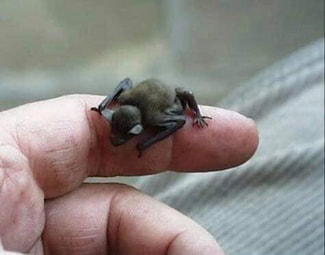 Bumblebee Bats are the world's smallest mammal and Belize's smallest bat. They are between 1.1 to 1.3 inches in length (29-33 mm), they weight .07 ounce (or 2 g), they have no tail, and their wingspan is approximately 6.7 inches (or 170 mm). Bumblebee bats, have a reddish/brown or grey upper parts with their underside being pale in colour. They have dark coloured relatively wide wings with long tips that enables them to hover. Their nose is pig-like, they have small eyes and relatively large ears. They have a large web of skin between their hind legs, known as the uropatagium, that gives them assistance when in flight. They are most active at dusk when they fly around jungle tree tops and cave entrances capturing insects. The Bumblebee Bat Habitat - Bumblebee Bats are found in Belize. Small colonies consisting of 10 - 100 bats, high up in limestone caves. When they roost they are spread out so that they are not touching each other. They prefer caves in forested areas, near rivers. The Bumblebee Bat Diet - Bumblebee Bats feed on insects. They either take them from foliage or capture them in the air. The Bumblebee Bat Breeding - Very little is known about reproduction in Bumblebee Bats but it is thought that they give birth to a single young in late April each year. Interesting Facts - Bumblebee Bats get their popular name because they are a similar size to a large bumblebees. The Bumblebee Bat has been included as one of the 10 species to be investigated by the Zoological Society of London. BELIZE'S SMALLEST MAMMAL - The Bumblebee Bat
 This Central American "Big Cat", is the third largest cat in the world. The jaguar is so special to the Belize people, that the government has taken over 155 square miles of land and set it aside as a jaguar sanctuary, to preserve the "Big Cat" of Belize. They can weigh as much as 300 lbs, some weigh less, but they are awesome nonetheless. A jaguar has massive shoulders, and huge forepaws, with claws to grasp anything they set their little (or should I say....large) heart upon. Their jaws can crush any skull, so these "Big Cats" deserve your respect. The truth is, jaguars are non-aggressive towards humans unless provoked, or until they have been attacked by man in a more outright manner. Some jaguars have been found raiding livestock, but also remember, what man has done in the past few years by depleting the jaguar's natural habitat for food, with deforestation. This is when our government stepped in and said, "No More!" and the Cockscomb Jaguar Sanctuary National Park was established in 1986. The jaguar spends much of the day snoozing on a bed of leaves, or sunning itself on a log or ledge. It may get around to making an occasional ground scrape or the odd tree scratch to serve as boundary markets, delineating its territory. Although ranges may partially overlap, they generally are not shared. To the male jaguar, his hundred or so kilometers of jungle - is his kingdom, whereas the female may choose to change her castle - and with it, her mate. Females begin breeding at about three years. Gestation is approximately three months. A female jaguar will normally have about two cubs to a litter. If they manage to survive, the mother will remain caring for her cubs going into the following year. Jaguars become active at night, stalking the peccary by preference but, if none are available, they will settle for agoutis, monkeys, deer, birds, even lizards and fish. The kill is accomplished by a bite at the neck. The jaguar is still hunted - illegally - for its beautiful yellow-brown or buff colored coat, which looks like an artist painted on it, elegant black spots, rosettes and butterflies. The greatest danger to the jaguar, however, is human encroachment on its home territory. As the forests of its range (northern Mexico to Argentina) recede, its life is in jeopardy, even when prey is still available, jaguars do not appear to be highly adaptable to enforced change. Hopefully, here in Belize there is a future for the jaguar, with the establishment of the world's first Jaguar Preserve in the Cockscomb Forest Reserve. A public awareness of the jaguar's plight will assure not only that its inherent rights will be respected but that the glory of its existence will be appreciated for many years to come. |
Is located on the island of Ambergris Caye, directly across from the Belize Barrier Reef, off the mainland coast of Belize. The property is nestled in a cluster of Australian Pine trees, backed to a littoral jungle, and surrounded by tropical gardens. It's about a one minute walk from the property to the beach, and a 10-15 minute drive from the island airstrip to the property.
We offer one bedroom suites (455 s.f.) of living area to include: livingroom, kitchenette, private bathroom and bedroom. We are also about a one minute walk from one of the best restaurants on the island serving (breakfast, lunch & dinner). Within walking distance you can find: (3) blocks is Robyn's BBQ (4) blocks is 2 fruit stands (5) blocks local grocery store IF YOU'RE COMING TO BELIZE TO............... If you're coming to Belize to dive the Blue Hole, descend the shelf walls at Turneffe, snorkel the Barrier Reef, explore Mayan ruins, rappel into a cave, kayak along the river through caves, zip line through jungle tree tops, hike through a cave to see an ancient human skeleton, swim with sharks, listen to Howler Monkey's, hold a boa constrictor, feed a jaguar, horseback ride through the jungle, canoe through a cave, rappel down a waterfall, sail around an island, enjoy cocktails & dinner to a sunset, climb 130' feet to the top of a Mayan ruin, rip up the jungle trails on an ATV, float through a series of caves on a tube, and sip on a rum punch..... then this is the place for you. Belize Budget Suites, offers you clean, affordable, attractive, accommodations, at prices that allow you to do all the things just mentioned. Archives
February 2021
Categories
All

For All Your Home Improvement Needs

For all Your Real Estate Needs
501-226-4400 10 Coconut Dr. San Pedro, Belize Your Ad Could Go Here
|

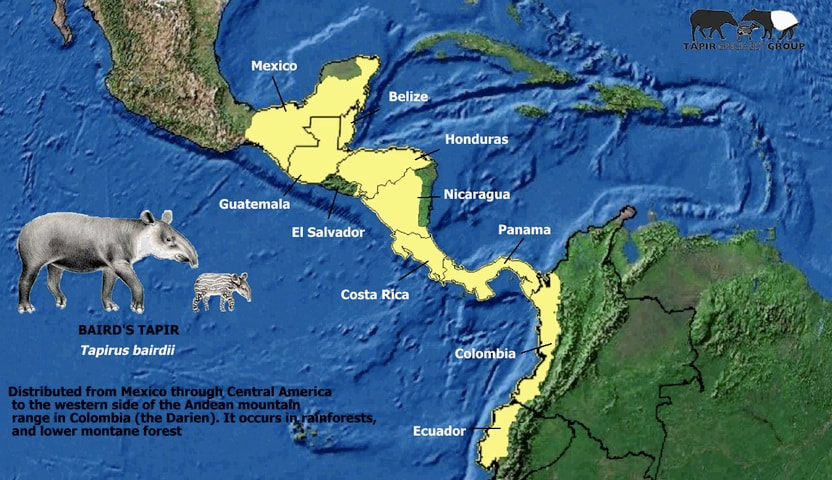














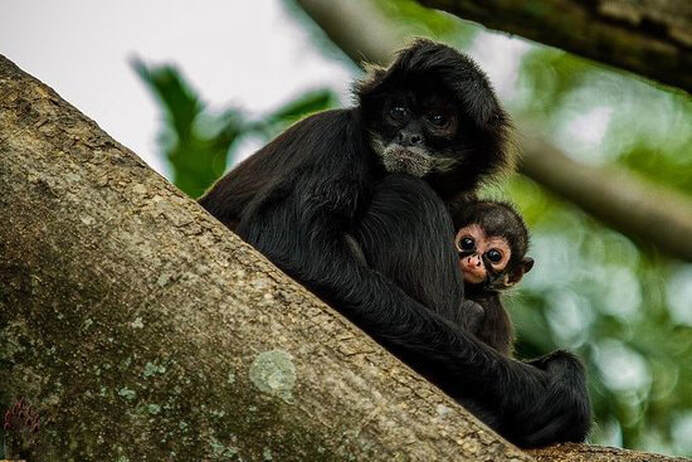






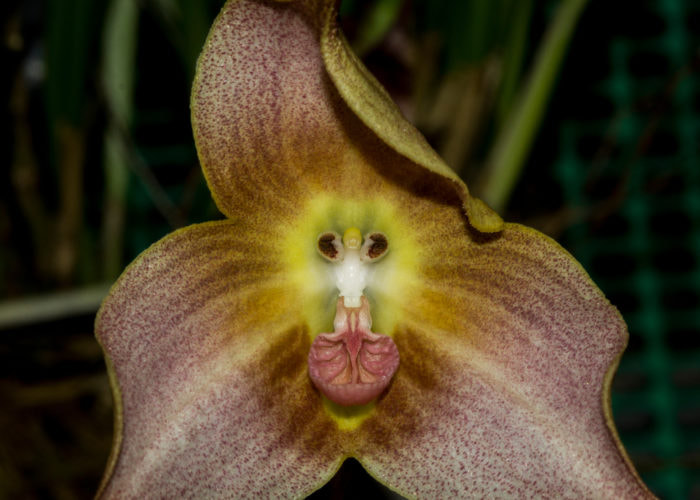




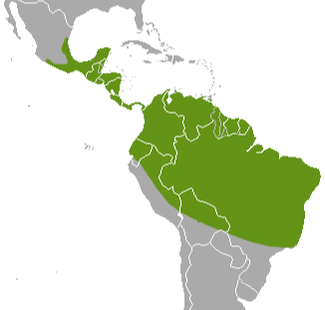




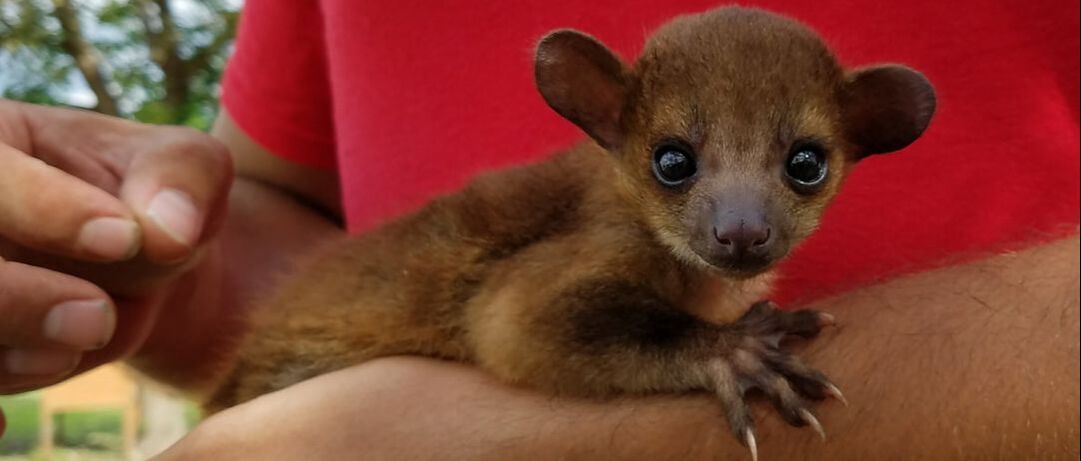

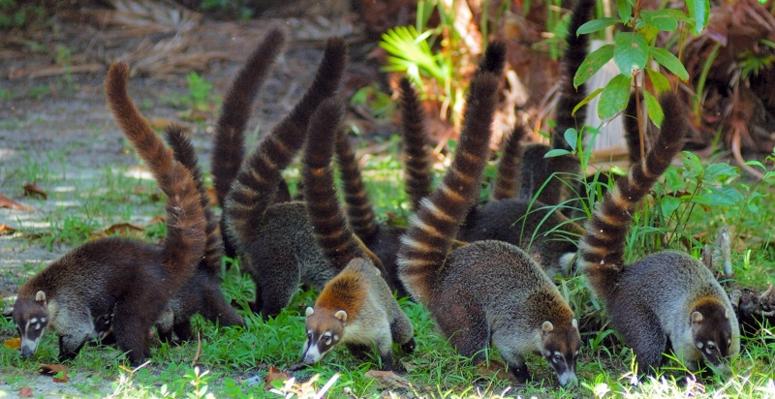





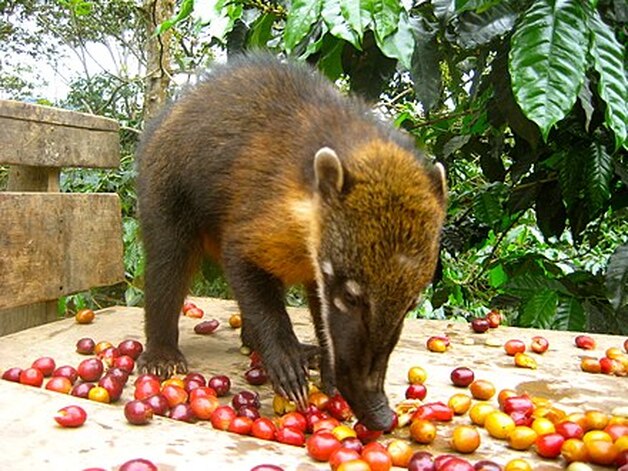



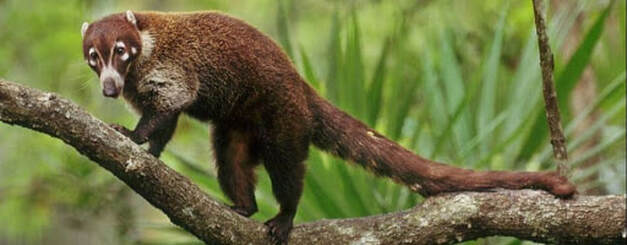


































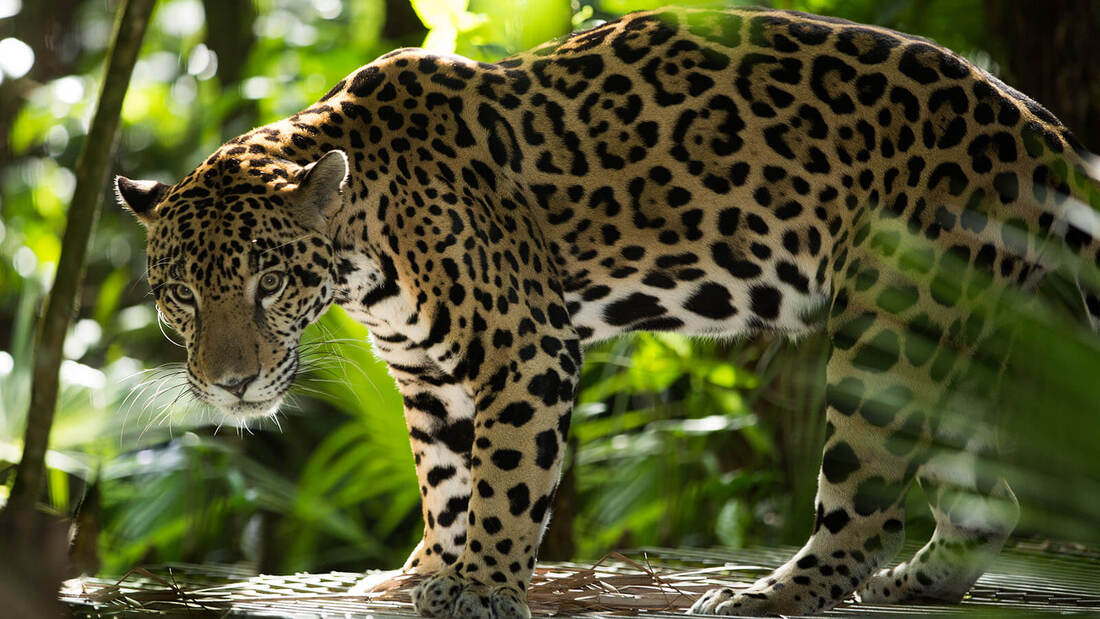




 RSS Feed
RSS Feed























